Dear Readers,
As SSC MTS | CHSL notification is out and candidates have started their preparation for this exam. Mahendras also has started special quizzes for this examination. This series of quizzes are based on the latest pattern of the SSC MTS | CHSL examination. Regular practice of the questions included in the quizzes will boost up your preparations and it will be very helpful in scoring good marks in the examination.
BPCW, DPEW, FPGW, ........., JPKW
(1) IPHW
(2) HPIW
(3) HPJW
(4) IPJW
वह सही विकल्प चुनें जो रिक्त स्थान को भरकर श्रृंखला को पूरा करेगा।
BPCW, DPEW, FPGW, ........., JPKW
(1) IPHW
(2) HPIW
(3) HPJW
(4) IPJW
Q.2. Select the Venn diagram that best represents the given set of classes.
Social Science, Psychology, Sociology
(1)

(2) 

(3) 

(4) 

उस वेन आरेख का चयन करें जो दिए गए वर्गों के सेट के बीच सर्वश्रेष्ठ संबंध दर्शाती है।
सामाजिक विज्ञान, मनोविज्ञान, समाजशास्त्र
(1)

(2) 

(3) 

(4) 

Q.3. Select the correct option that will fill in the blank and complete the series.
22, 4, 16, 24, 6, 36, 26, 8, 64, 28, 10, ......
(1) 3
(2) 100
(3) 30
(4) 9
वह सही विकल्प चुनें जो रिक्त स्थान को भरकर श्रृंखला को पूरा करेगा।
22, 4, 16, 24, 6, 36, 26, 8, 64, 28, 10, ......
(1) 3
(2) 100
(3) 30
(4) 9
Q.4. Select the correct option that will fill in the blank and complete the series.
3, 7, 11, 15, .....
(1) 19
(2) 18
(3) 21
(4) 23
वह सही विकल्प चुनें जो रिक्त स्थान को भरकर श्रृंखला को पूरा करेगा।
3, 7, 11, 15, .....
(1) 19
(2) 18
(3) 21
(4) 23
Q.5. Kedar starts from his house and travels 25 km towards the south by bicycle and reaches the bus stand. Then he takes a left turn and travels 15 km, take takes a left turn again and travels 25 km more. How far is he from his original position?
(1) 10 km
(2) 15 km
(3) 25 km
(4) 20 km
केदार अपने घर से शुरू करता है और साइकिल से दक्षिण की ओर 25 किमी का सफर तय करके बस स्टैंड पहुंचता है। फिर वह बाएं मुड़ता है और 15 किमी की यात्रा करता है, फिर बाएं मुड़ता है और 25 किमी की यात्रा करता है। वह अपने मूल स्थान से कितनी दूर है?
(1) 10 किमी
(2) 15 किमी
(3) 25 किमी
(4) 20 किमी
Q.6. Select the option that will come next in the given series.

(1) 

(2) 

(3) 

(4) 

उस विकल्प का चयन करें जो दी गई श्रृंखला में अगला आयेगा।

(1) 

(2) 

(3) 

(4) 

Q.7. The statements below are followed by two conclusions labelled I and II. Assuming that the information in the statements is true, even if it appears to be at variance with generally established facts, decide which conclusion(s) logically and definitely follow(s) from the information given in the statements.
Statements:
All whites are pink. All greens are pink.
Conclusion:
I. Some pinks are green.
II. Some pinks are white.
(1) Only conclusion I follows.
(2) Only conclusion II follows.
(3) Both conclusions follow.
(4) Either conclusion I or conclusion II follows.
नीचे दिए गए कथन दो निष्कर्षों I और II द्वारा अनुसरण किये जाते हैं। आपको यह मानना है कि कथनों में दी गई जानकारी सत्य है, भले ही यह आम तौर पर ज्ञात तथ्यों के भिन्न क्यों न हो, निर्णय लें कि कौन -सा निष्कर्ष तार्किक और निश्चित रूप से दिए गये कथनों का अनुसरण करता है।
कथन :
सभी सफ़ेद गुलाबी हैं। सभी हरे गुलाबी हैं।
निष्कर्ष :
I. कुछ गुलाबी हरे हैं।
II. कुछ गुलाबी सफेद हैं।
(1) केवल निष्कर्ष I अनुसरण करता है।
(2) केवल निष्कर्ष II अनुसरण करता है।
(3) दोनों निष्कर्षों का अनुसरण करते हैं।
(4) दोनों निष्कर्षों का अनुसरण करते हैं।
Q.8. The statements below are followed by two conclusions labelled I and II. Assuming that the information in the statements is true, even if it appears to be at variance with generally established facts, decide which conclusion(s) logically and definitely follow(s) from the information given in the statements.
Statements:
All books are grapes. Some grapes are fruits.
Conclusions:
I. No grape is a book.
II. Some grapes are books.
(1) Either conclusion I or II follows.
(2) Only conclusion II follows.
(3) Only conclusion I follows.
(4) Both conclusions I and II follow.
नीचे दिए गए कथन दो निष्कर्षों I और II द्वारा अनुसरण किये जाते हैं। आपको यह मानना है कि कथनों में दी गई जानकारी सत्य है, भले ही यह आम तौर पर ज्ञात तथ्यों के भिन्न क्यों न हो, निर्णय लें कि कौन -सा निष्कर्ष तार्किक और निश्चित रूप से दिए गये कथनों का अनुसरण करता है।
कथन :
सभी पुस्तकें अंगूर हैं। कुछ अंगूर फल हैं।
निष्कर्ष :
I. कोई अंगूर पुस्तक नहीं है।
II. कुछ अंगूर पुस्तक हैं।
(1) या तो निष्कर्ष I या II अनुसरण करता है।
(2) केवल निष्कर्ष II अनुसरण करता है।
(3) केवल निष्कर्ष I अनुसरण करता है।
(4) दोनों निष्कर्ष I और II अनुसरण करते हैं।
Q.9. In a class, five children wrote the aptitude test. In the result report, it was noted that the child A got less marks than the child B. The child C got less marks than the child D. The child B is got less mark than the child C and child A got more marks than the child E. which child got the second-highest marks?
(1) D
(2) B
(3) C
(4) A
एक कक्षा में, पांच बच्चों ने एप्टीट्यूड टेस्ट लिखा। परिणाम रिपोर्ट में, यह ध्यान दिया गया कि बच्चे A को बच्चे B से कम अंक मिले। बच्चे C को बच्चे D से कम अंक मिले। बच्चे B को बच्चे C से कम अंक मिले और बच्चे A को बच्चे E से अधिक अंक मिले। किस बच्चे को दूसरा सर्वोच्च अंक मिला?
(1) D
(2) B
(3) C
(4) A
Q.10. Six friends - A, B, C, D, E and F are sitting in a circle, facing towards the centre. F is sitting to the immediate left of A and B is sitting opposite to E. A and D is sitting opposite to each other. Who is sitting opposite to F?
(1) A
(2) E
(3) C
(4) F
छह मित्र - A, B, C, D, E और F एक वृत्त में बैठे हैं और केन्द्र की ओर देख रहे है। F, A के तुरन्त बाएं बैठा है और B, E के विपरीत बैठा है। A और D एक -दूसरे के विपरीत बैठे है। F के विपरीत कौन बैठा है?
(1) A
(2) E
(3) C
(4) F
ANSWER-
Ans.1 (2)
+2, +0, +2, +0
Ans.2 (2)
Ans.3 (2)
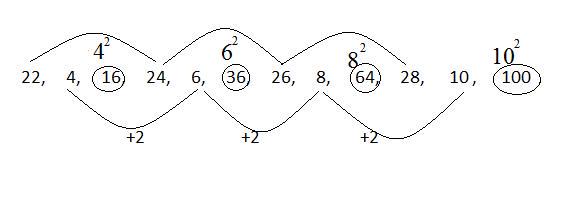
Ans.4 (1)
+4, +4, +4, +4
Ans.5 (2)
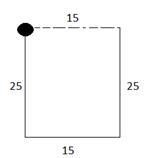
Ans.6 (3)
Ans.7 (3)
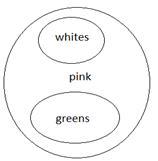
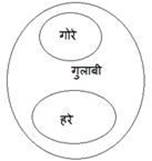
Ans.8 (2)
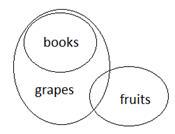
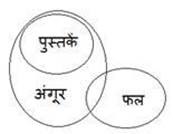
Ans.9 (3)
D > C > B > A > E
Ans.10 (3)
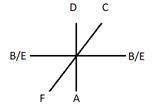





.jpg)
0 comments:
Post a Comment
MAHENDRA GURU